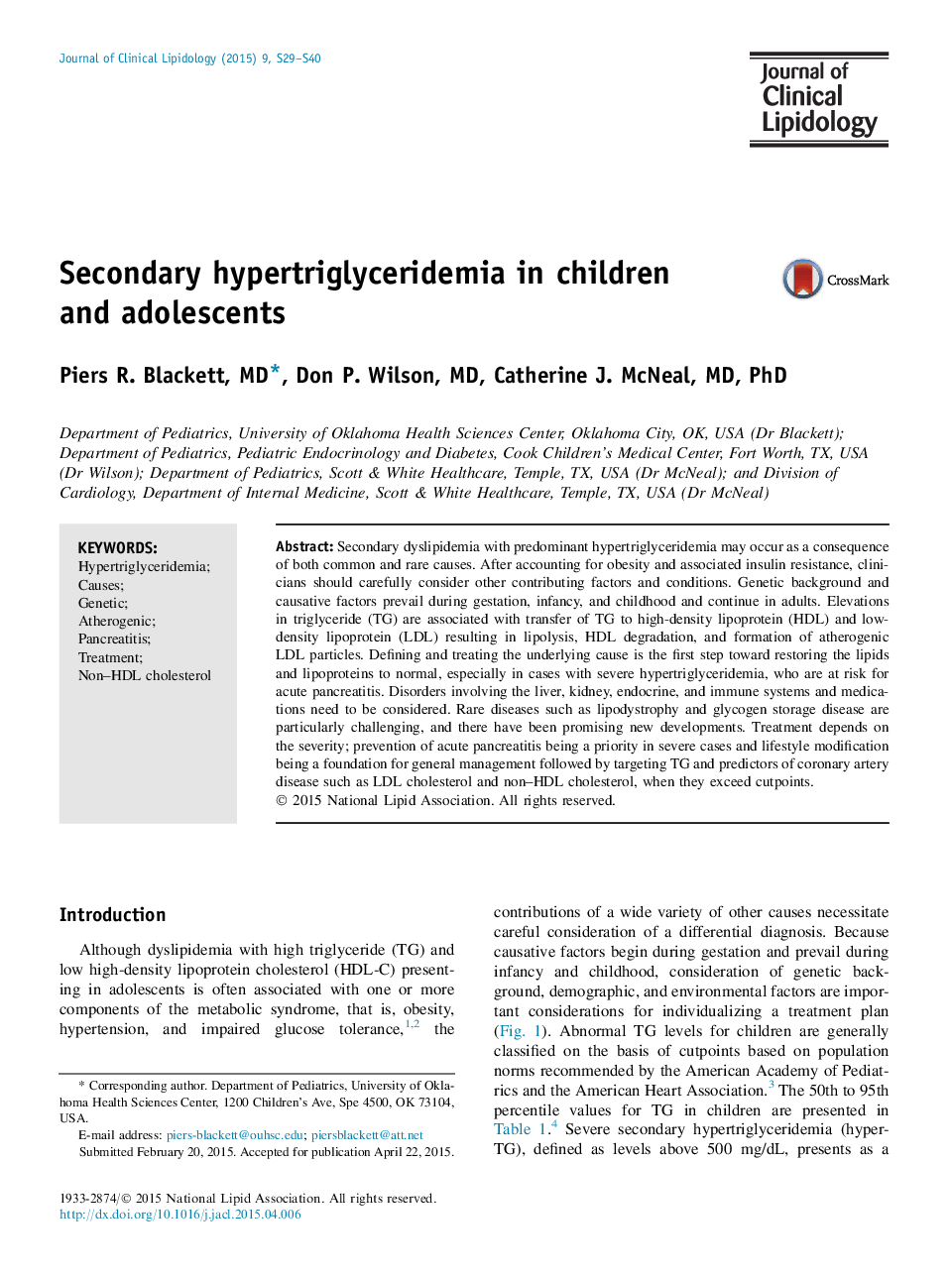| Article ID | Journal | Published Year | Pages | File Type |
|---|---|---|---|---|
| 2965811 | Journal of Clinical Lipidology | 2015 | 12 Pages |
•After accounting for obesity, other contributing factors and conditions need consideration.•Defining and treating the underlying cause is the first step toward restoring the lipids and lipoproteins to normal.•Genetic background and causative factors prevail during gestation, infancy, and childhood and continue in adults.•Prevention of acute pancreatitis is a priority in severe cases.•Low-density lipoprotein cholesterol and non–high-density lipoprotein cholesterol, should be targeted when they exceed cutpoints.
Secondary dyslipidemia with predominant hypertriglyceridemia may occur as a consequence of both common and rare causes. After accounting for obesity and associated insulin resistance, clinicians should carefully consider other contributing factors and conditions. Genetic background and causative factors prevail during gestation, infancy, and childhood and continue in adults. Elevations in triglyceride (TG) are associated with transfer of TG to high-density lipoprotein (HDL) and low-density lipoprotein (LDL) resulting in lipolysis, HDL degradation, and formation of atherogenic LDL particles. Defining and treating the underlying cause is the first step toward restoring the lipids and lipoproteins to normal, especially in cases with severe hypertriglyceridemia, who are at risk for acute pancreatitis. Disorders involving the liver, kidney, endocrine, and immune systems and medications need to be considered. Rare diseases such as lipodystrophy and glycogen storage disease are particularly challenging, and there have been promising new developments. Treatment depends on the severity; prevention of acute pancreatitis being a priority in severe cases and lifestyle modification being a foundation for general management followed by targeting TG and predictors of coronary artery disease such as LDL cholesterol and non–HDL cholesterol, when they exceed cutpoints.
